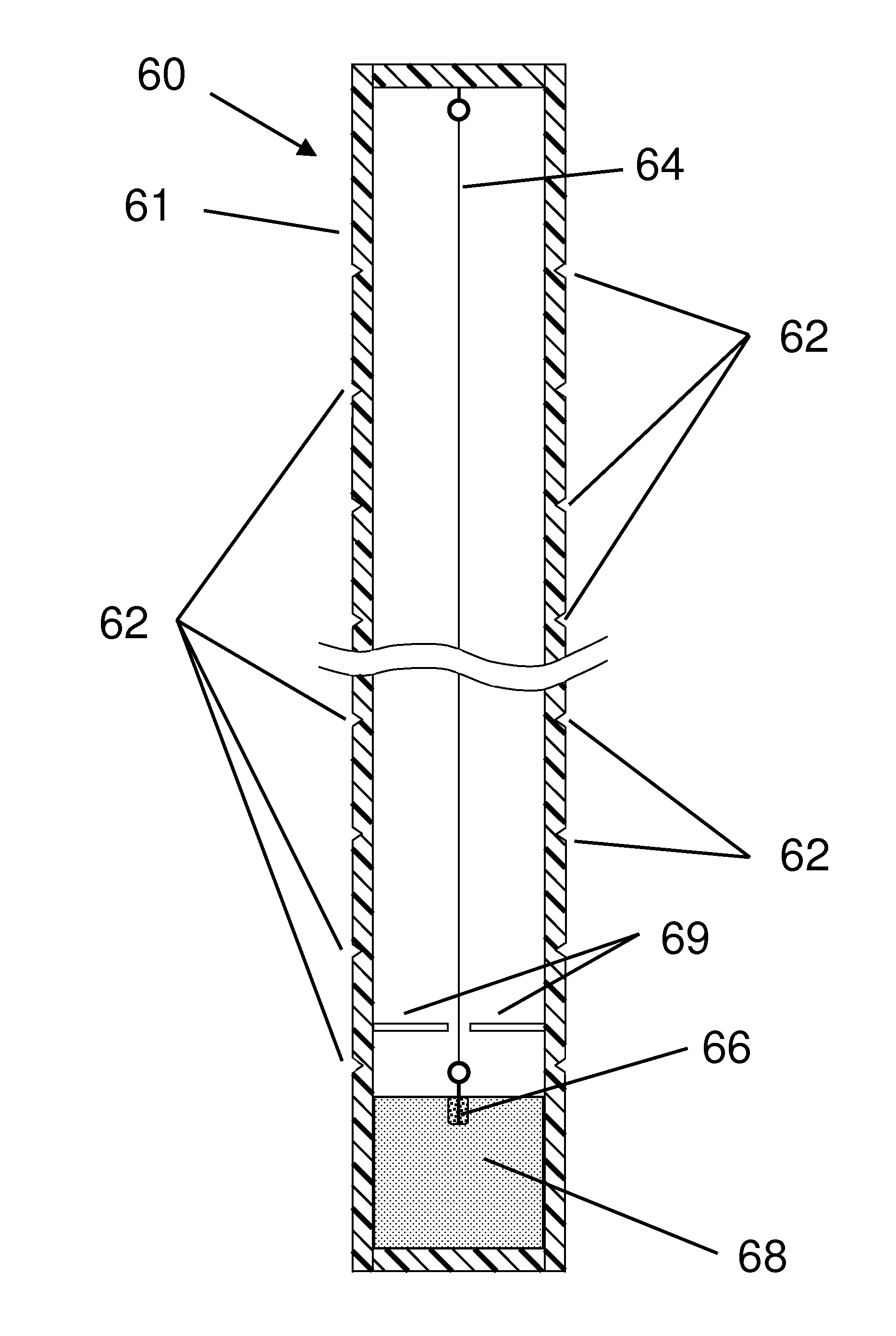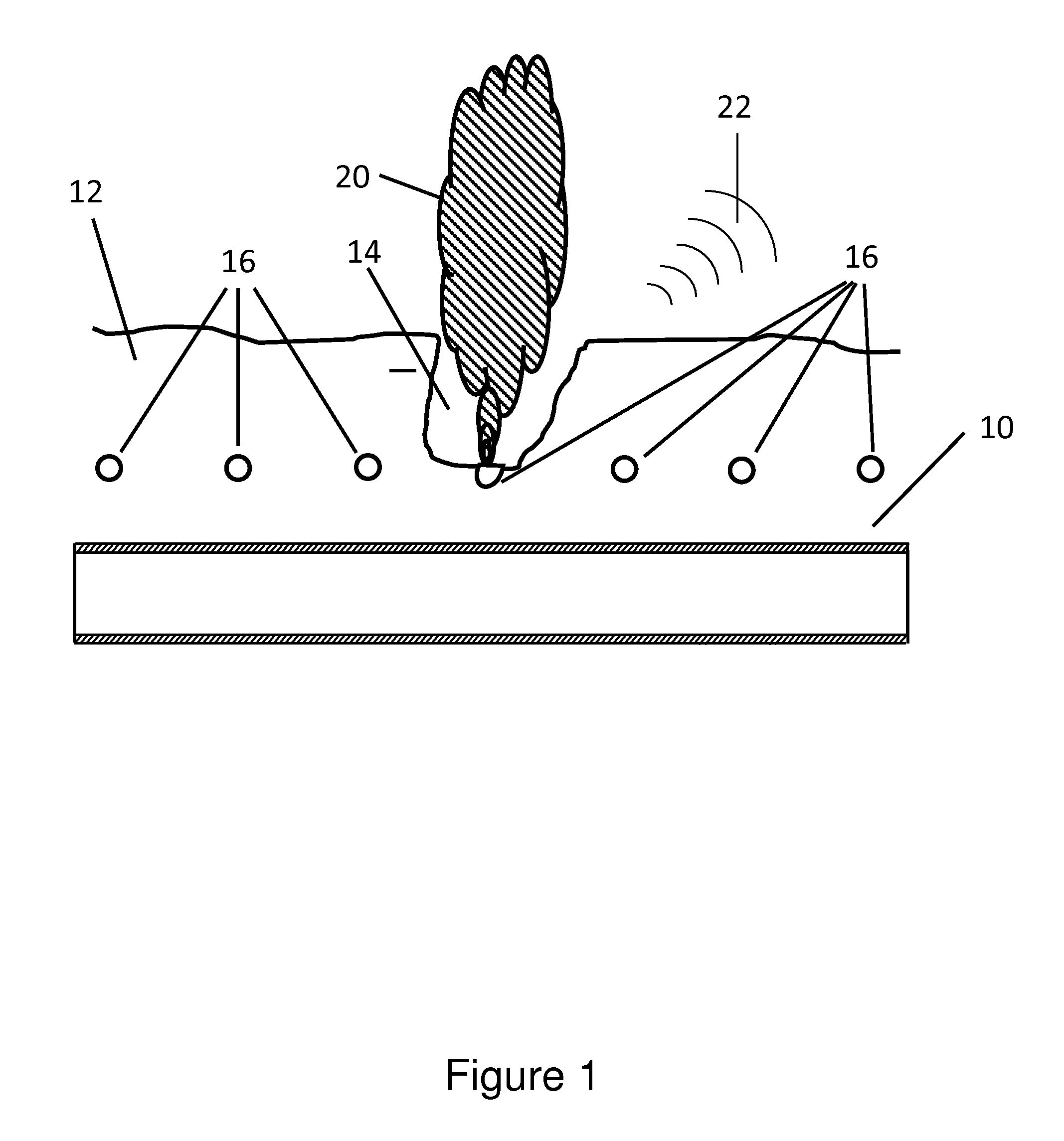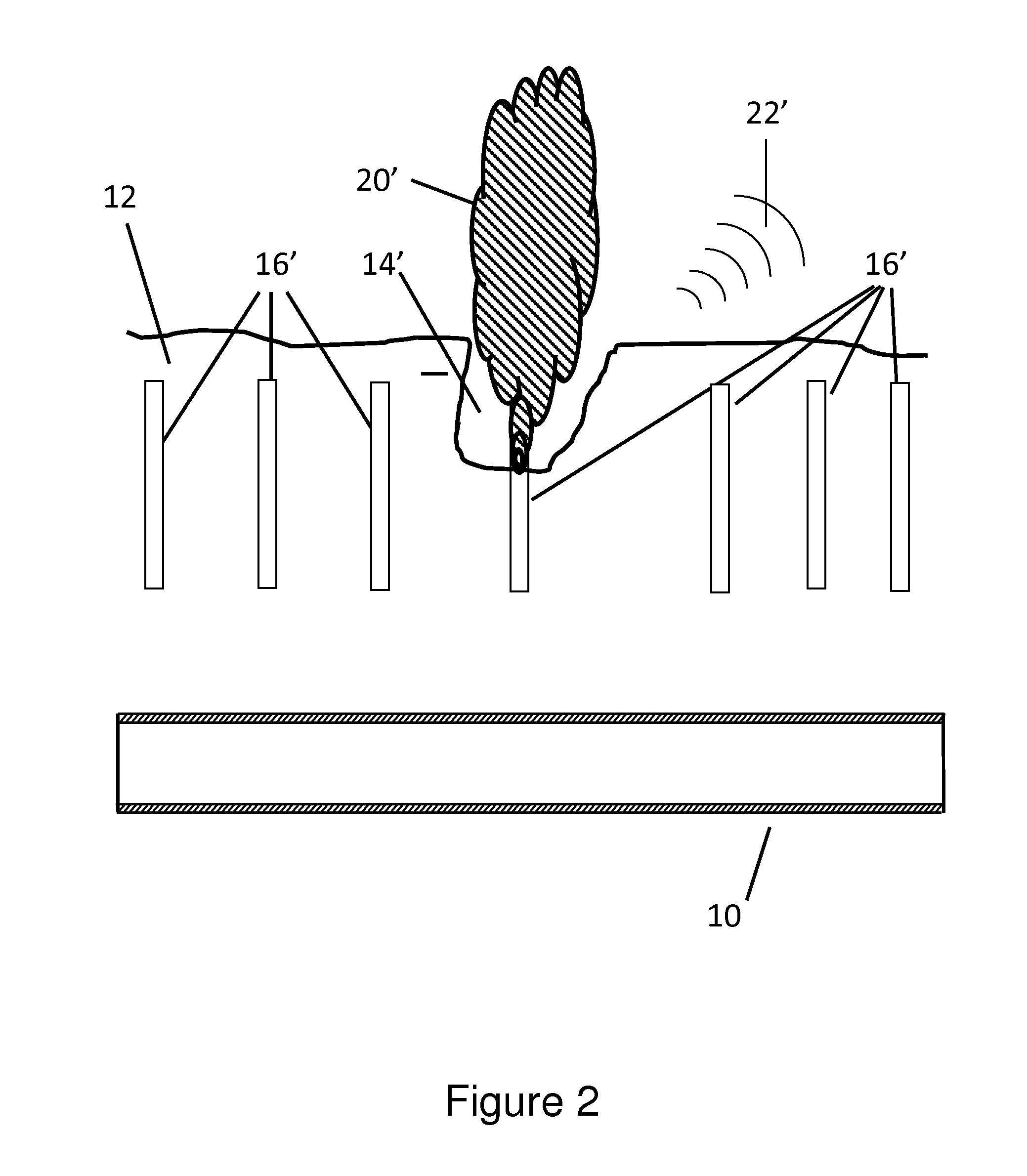Passive Alarm To Prevent Buried Infrastructure Damage
a technology of buried infrastructure and passive alarm, which is applied in the direction of pipe laying and repair, mechanical equipment, instruments, etc., can solve the problems of only practical system which requires continuous buried devices, endanger buried infrastructure, etc., and achieve the effect of convenient use and convenient protection of existing buried infrastructur
- Summary
- Abstract
- Description
- Claims
- Application Information
AI Technical Summary
Benefits of technology
Problems solved by technology
Method used
Image
Examples
first embodiment
[0138]FIG. 7 shows a buried infrastructure excavation-sensing module 50 comprising an elongated, hollow tube 51 which is closed at both ends and scored at multiple locations 52 along the length of the tube. Tube 51 can be of any desired length and / or diameter. Although many different materials may be used for the tube 51, it has been found that thermoplastic pipe works quite well. An embodiment which was tested and found to be satisfactory was made from standard PVC pipe. The tested embodiment had an internal diameter of 1.5 inches with triangular scores spaced at approximately 1.5 inches locations along the length of the tube. Scoring makes the tube predictably breakable by external force. Other scoring geometries are also possible. The exact length and diameter of the buried infrastructure excavation-sensing module will depend on many different factors as will be readily apparent to one skilled in the art. For example, the composition of the soil where the infrastructure is buried...
fourth embodiment
[0143]FIG. 12 shows a cross-section of a buried infrastructure excavation-sensing module 90 comprising a gas-impermeable housing 91 that can be broken or ruptured by contact with construction equipment (not shown). The general configuration of excavation-sensing module 90 may be spherical or cylindrical as shown herein, or any other suitable shape. A compressed, colored and odorous gas 92 is contained in housing 91. A break in housing 91 will release colored, odorous gas 92, thus alerting construction personnel to the presence of the buried infrastructure. Housing 91 may be made of any suitable material such as a synthetic resin or plastic compound (as shown in the drawing) or a metallic substance. As an alternative to using a compressed, colored and odorous gas 92 within housing 91, it is possible to have a chemical compound contained within the housing 91 which will generate gas upon exposure to the atmosphere.
fifth embodiment
[0144]FIG. 13 shows a cross-section of a buried infrastructure excavation-sensing module 93 comprising a gas-impermeable outer housing 95 that can be broken or ruptured by construction equipment (not shown) and a second, inner gas-impermeable housing 97. As with the embodiment of FIG. 12, the general configuration of excavation-sensing module 93 may be spherical or cylindrical, as shown herein, or any other suitable shape. Housings 95 and 97 are held in spaced alignment by partitions 99. Both housings are filled with compressed, colored, odorous gas 101. The gas contained within housing 97 is at a higher pressure than the gas inside housing 95. A whistle 103 is mounted on inner housing 97, but is blocked by a friable diaphragm. When compressed, colored, odorous gas 101 is released from the outer housing 95 by an excavation-caused rupture, the gas inside housing 97 breaks the diaphragm causing the compressed, colored, odorous gas 101 to be released from inner housing 97 via whistle 1...
PUM
 Login to View More
Login to View More Abstract
Description
Claims
Application Information
 Login to View More
Login to View More - R&D
- Intellectual Property
- Life Sciences
- Materials
- Tech Scout
- Unparalleled Data Quality
- Higher Quality Content
- 60% Fewer Hallucinations
Browse by: Latest US Patents, China's latest patents, Technical Efficacy Thesaurus, Application Domain, Technology Topic, Popular Technical Reports.
© 2025 PatSnap. All rights reserved.Legal|Privacy policy|Modern Slavery Act Transparency Statement|Sitemap|About US| Contact US: help@patsnap.com



